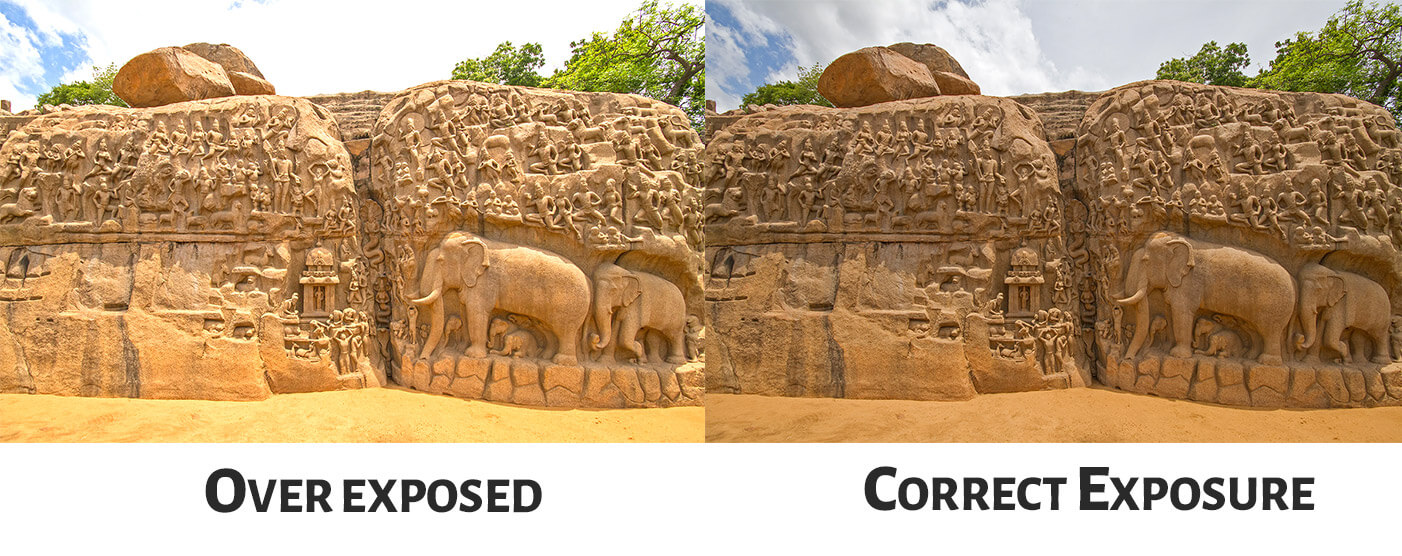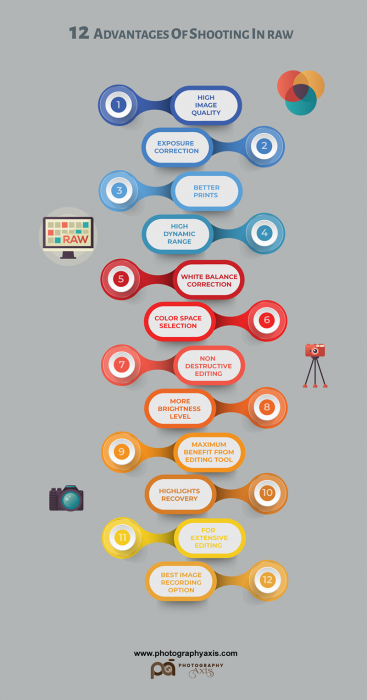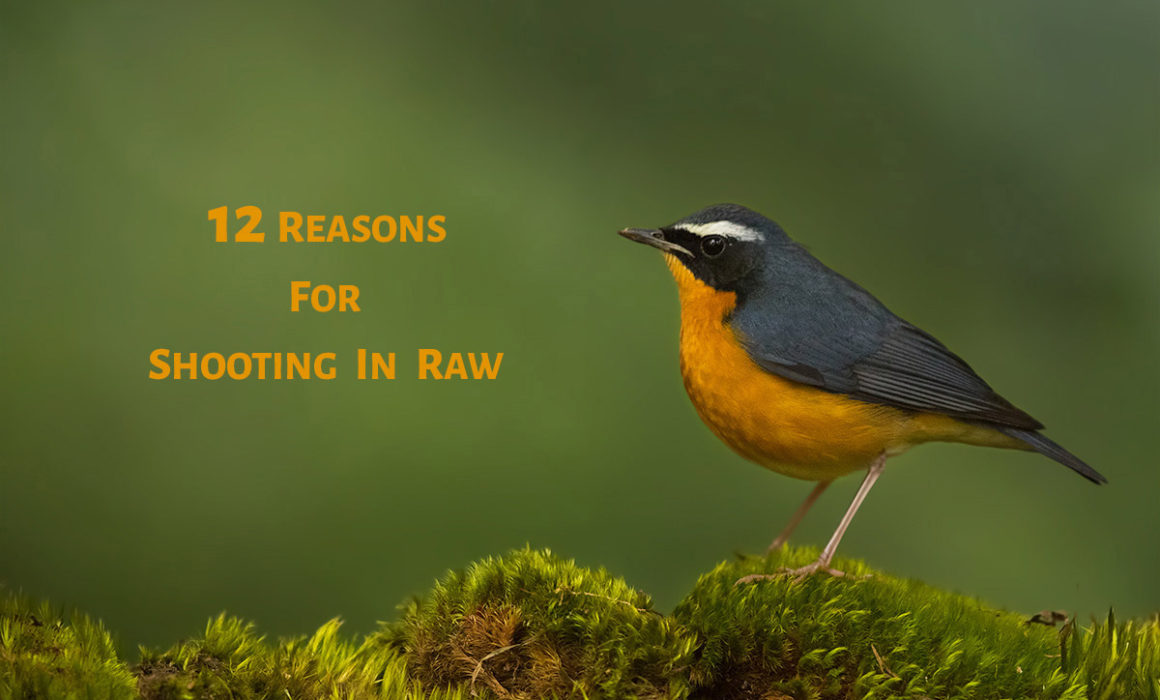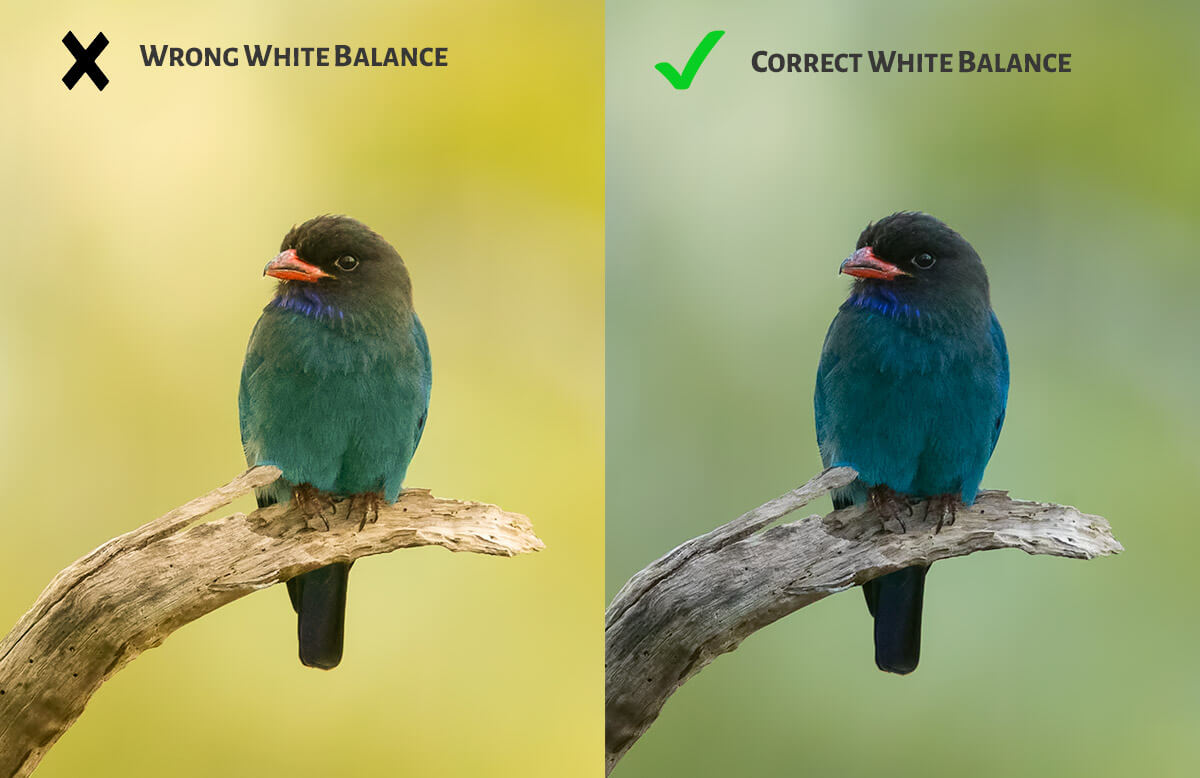RAW Vs JPEG – Which is Better? [12 Differences]
Should I shoot in RAW or JPEG format? This is the question that comes into the mind of many who have just started photography. There are many advantages of shooting in RAW over JPEG. In this guide, I will share all the differences between the RAW and JPEG image file formats. It will help you decide which is best for you.
What is a RAW image? 🏞
A RAW image is an unprocessed image. It is actually the information recorded by the camera sensor when you click the shutter button.
This file will have more details of the scene when compared to the compressed lossy JPEG format.
RAW Vs JPEG – The Key Differences 😎
1. Higher Level of Image Quality
When you capture the image in RAW, you will be able to capture more details in the scene. Thus, you can get a high-quality image that is good for editing.
On the other hand, when you shoot in JPEG, the camera will do the processing based on its algorithm and you will get a compressed final image, which will have less details when compared to the RAW file.
2. Image Exposure Correction

One main advantages of shooting in RAW format is the ability to fix the image exposure.
Sometimes, you will have to underexpose or overexpose the scene because of the tricky lighting conditions. It can alsi happen due to wrong camera settings.
We can fix the exposure later while editing without losing details if we record in RAW format.
If we try to do the same exposure correction on a JPEG image, we can see a reduction in image quality.
In the example above, the image on the left got slightly overexposed because of the wrong camera settings. I could fix the exposure and recover more details in the image since the picture is in RAW format.
If the same image was shot in JPEG, it will be tough to recover the details of the blown-out sky.
3. For Better Prints
I strongly recommend to shoot in RAW if you plan to print your images. It will help you to get better colors, tones, and details.
You will also have the option to enlarge images for bigger prints. You can adjust the image resolution without losing details. There will be less color banding.
When you shoot in JPEG and try to enlarge the picture for a bigger print then you will have to increase the resolution of the JPEG file which will result in bad quality prints.
4. Higher Dynamic Range
A RAW image will have a higher dynamic range than a compressed JPEG. This feature has helped me in many situations to get good images after processing.
You can recover clipped shadow details and burned highlights to an extent from RAW images.
5. Helps to Choose Color Space
Shooting in the RAW format gives you the flexibility to choose the color space of your choice in a better way, especially when you are printing photos.
You can select the color space during the post-processing.
You can choose sRGB color space while exporting the image for web images. If a wider color space is required, then ProphotoRGB can be selected. Another available option is Adobe RGB.
With the help of RAW format, you can export the same image in different color spaces without any issues.
For high quality photo printing, you can set AdobeRGB as color space and get a better quality print (only if the printing store supports AdobeRGB color space).
6. White Balance Correction
Sometimes, it is tricky to get the right white balance in certain lighting conditions .
In such situations, if you use the JPEG file format, you will not be able to change the color temperature later easily.
In such conditions, shooting in RAW format is a better option. Set the white balance to AWB (Auto White Balance) mode. If the camera fails to set the right color temperature, we can easily fix it during the editing stage.
In the above picture, the white balance was wrongly set to Shade because of which there is a yellow cast in the image. It is corrected to Daylight during post-processing, as shown in the picture on the left.
7. For a Non-Destructive Editing
When you edit a RAW file, you are not destroying the actual data. You are just making some adjustments and corrections to save the final image in JPEG format. You can reset the settings anytime to retain the actual RAW image without any changes.
But, if you do the same adjustments on the JPEG image, we are compromising on the image quality every time when you make some changes.
8. More Levels of Brightness
When it comes to RAW Vs JPEG, RAW can capture more levels of brightness when compared to JPEG.
It can record up to 16,384 levels of brightness depending on the bit depth supported by the camera sensor.
JPEG can only support 256 levels of brightness. The higher the number of brightness levels better will be the image tones. So, shoot in RAW to get better images with smooth tones.
9. For Maximizing the Benefits of the Editing Software
The RAW format can give you more editing options while using tools like Adobe Lightroom or Photoshop.
It is because of the amount of information and details captured and stored in the RAW image.
You will have more tweaking ability on different image parameters. All the good post-processing tools are designed for processing RAW images.
10. To Recover Highlights
You can recover the blown-out highlights in an image to an extent if you shoot in RAW.
Suppose, you were shooting a scene with a sky in the frame. Since the camera’s dynamic range is lower than the human eyes, there is a chance that the sky will get whitewashed.
In such a situation, if you capture in RAW, then you can recover the sky details later using any photo editing software.
Shooting in RAW has saved me a lot to recover the sky in my landscape images. Otherwise, I will have to use a Neutral Density filter to underexpose the sky separately.
11. Extensive Editing For Fine Art Images
If you plan to do extensive photo editing to create fine art images, the RAW format can help you get more out of the editing process.
It will be useful for digital artists and fine art photographers.
12. Best Image File Fomat
RAW format is the current best option available for image recording. So, always go with the best option.
Most DSLR/ Mirrorless cameras will allow you to record the same image in both RAW and JPEG format. You will get a RAW image and a JPEG image of the same file.
You can use this option if you want to save a JPEG copy of the image also. Here, the camera will process the RAW picture and save it as a JPEG image.
Infographic – 12 Advantages of Shooting in RAW
I am summarising the entire points to an Infographic so that you can download it and use it as a quick reference card.

Final Thoughts
During my initial days of photography, one of the photography mistakes that I did was, shooting in the JPEG format even when the RAW option was available in the camera.
I used to post-process the JPEG files. I ended up losing the image quality after the editing process.
So, I recommend shooting in RAW if your camera supports it. Later, you can process the RAW files using tools like Adobe Lightroom or Photoshop for generating JPEG or TIFF images.



I haven’t shot much in RAW because I always feel like the quality looks poor when viewing it on my camera. I didn’t even consider that it can be correcting using software on my computer. I am not too familiar with editing so this kind of opened my eyes here and gave me some good insight. I am going to be going out of town this upcoming weekend so I plan on getting some nice pictures and I will do some in RAW and edit them after, then I will compare them. Thanks for the tips and tricks.
Once you start shooting in RAW then you will always shoot in RAW. This is from my experience. Initially, I too was little hesitant to capture in RAW. This requires some additional effort in post-processing tool for the final image. But, believe me, it is definitely worth the effort. whatever minor mistakes we have made during the image capture can be rectified during post processing.